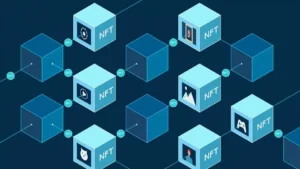Computer Vision: The Key to Humanoid Robots
PUBLISHED
- January 30, 2023
- 12:02 pm
PUBLISHED
- January 30, 2023
- 12:02 pm

Computer vision has rapidly emerged as a critical component of the future of robotics. With the ability to process and interpret visual information, computer vision is enabling robots to understand and interact with the world in more natural and human-like ways. This, in turn, is paving the way for a new generation of intelligent, autonomous robots that are able to perform complex tasks and make decisions with greater speed and accuracy.
LIKE THIS
Computers Can See Now


At the core of computer vision is the ability to analyze and interpret images and video streams in real-time. This allows robots to quickly and accurately identify objects, recognize patterns and respond to changes in their environment. It also enables robots to build maps of their surroundings and navigate their way through unfamiliar terrain with ease.
The impact of computer vision on robotics has been nothing short of transformative. For example, computer vision is now enabling robots to perform tasks that were previously only possible for humans to do. This includes everything from sorting packages and performing inspections to assembling products and even providing care for elderly or disabled people.
One of the greatest benefits of computer vision for robotics is its ability to improve safety. By using computer vision, robots can better understand and respond to their environment, reducing the risk of accidents and injuries. For example, robots equipped with computer vision are able to detect and avoid obstacles in their path, making them safer for workers and the public alike.
Robots Are Everywhere


Computer vision is also playing a major role in the development of collaborative robots, also known as cobots. These robots are designed to work alongside humans, performing tasks that are too dangerous, repetitive, or time-consuming for people to do. By combining computer vision with advanced sensors and actuators, cobots are able to precisely and safely interact with the world, making them ideal for use in a wide range of applications.
Another area where computer vision is making a big impact is in the field of autonomous vehicles. With computer vision, self-driving cars are able to “see” the road ahead, identify other vehicles and pedestrians, and respond to changes in traffic conditions. This is making it possible for autonomous vehicles to safely and efficiently navigate roads and highways, bringing us closer to a future where driving is done by machines, not people.
In addition to the benefits it provides for robotics, computer vision is also having a major impact on other industries, including healthcare, retail, and entertainment. By enabling machines to understand and respond to visual information, computer vision is helping to revolutionize the way we live and work.


The future of computer vision and robotics is bright, with many exciting new applications on the horizon. With continued advancements in technology, it is likely that robots equipped with computer vision will become even more intelligent and capable, making them even more useful and widespread in our everyday lives.









